Latest News & Information Pieces
Is Your Hip Flexor Really the Problem? A Closer Look at Anterior Hip Pain in Runners
If you’re a runner dealing with pain at the front of your hip, you may have assumed it’s a strained or overused hip flexor. After all, that’s the go-to explanation, right? Not so fast. While the hip flexors are often blamed, true hip flexor tendinopathy or strain is less common than you might think - especially if your pain shows up during specific parts of your run.
Book Appointment
Let’s take a quick look at the biomechanics of running. During the stance phase - when your foot is in contact with the ground - the hip flexors are not highly active. Instead, they’re most engaged during the early swing phase, when your leg is moving forward and off the ground. So if your pain is triggered during foot strike or while loading the leg, it’s unlikely your hip flexors are the root cause. However, we also need to look at the type of running you are doing. If you are a sprinter, this may be the case. But, in the general population and recreational athletes, we see endurance runners. Where the activity of the hip flexors is significantly reduced compared to sprinters.
This raises the question: What else could be causing that anterior hip pain?
One common culprit in endurance runners is bone stress injury, such as a femoral neck stress reaction or stress fracture. These injuries can irritate or inflame nearby tissues, including the hip flexor tendon, which might explain why you feel pain in that area - even if the tendon isn’t the source of the issue. In other words, your hip flexor might be hurting, but that doesn’t mean it’s injured.
Other possible causes of anterior hip pain include:
• Labral pathology
• Femoroacetabular impingement (FAI)
• Iliopsoas bursitis
• Referred pain from the lower back or pelvis
If your pain worsens with impact, persists after runs, or doesn’t improve within a day or two, it’s worth seeking evaluation. A Physiotherapist can assess movement patterns, strength imbalances, and structural contributors that may be driving your symptoms to help determine the best treatment forward.
In short: Don’t be too quick to blame the hip flexors. Anterior hip pain in runners is often more complex and deserves a deeper look to ensure proper treatment.
Struggling with hip and don't know where to start? Book an assessment with one of our physios today!

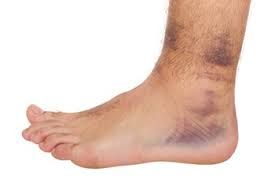
Ankle sprains are one of the most common injuries we see in the clinic. Whether it’s from sport, exercise, or simply stepping off a curb the wrong way, most people have experienced some degree of ankle sprain in their lifetime. While many people think of an ankle sprain as a “minor” injury, they can cause lingering problems if not managed properly. Physiotherapy plays a key role in not just helping your ankle heal, but also in preventing repeated sprains and long-term issues like chronic instability, which can lead to other compensatory problems down the road. What is an Ankle Sprain? An ankle sprain happens when the ligaments are stretched or torn. This usually occurs when the foot rolls inward (an inversion sprain), stressing the ligaments on the outer side of the ankle. There are other ligaments that can sprained in and around the ankle, including the deltoid ligament on the inside of the ankle, and the syndesmosis (which is called a high ankle sprain). However, the most common type of ankle sprain tends to affect the lateral ligaments (most often the anterior talofibular ligament (ATFL), calcanofibular ligaments (CFL)). Sprains are graded based on severity: • Grade 1 (mild): Ligaments stretched, little to no tearing, mild pain and swelling • Grade 2 (moderate): Partial tearing of ligaments, more swelling, bruising, and difficulty walking • Grade 3 (severe): Complete tear of one or more ligaments, significant swelling, bruising, and inability to bear weight Common Symptoms • Pain on the outside (or sometimes inside) of the ankle • Swelling and bruising appearing within hours • Tenderness to touch around the injured ligaments • Difficulty walking or bearing weight • Feeling of instability or “giving way” in the ankle Why Proper Treatment Matters It can be tempting to just “walk it off,” but untreated ankle sprains often lead to: • Chronic ankle instability (ankle frequently giving way) • Decreased strength and balance in the ankle and foot • Increased risk of re-injury — especially in sports • Long-term issues like early joint wear or persistent swelling This is why physiotherapy is so important: it helps ensure proper healing, restores strength and stability, and reduces your risk of future sprains. How Physiotherapy Can Help When you come in, our physiotherapists will do a thorough assessment of your ankle — checking range of motion, swelling, ligament stability, and muscle strength. We’ll also look at how you move, since foot and leg mechanics can contribute to the injury in the first place. Early Stage: Reducing Pain & Swelling In the first few days after injury, the focus is on calming things down. We may recommend: • Relative rest and protection (sometimes crutches or strapping/bracing) • Ice, compression, and elevation for swelling & pain relief • Gentle manual therapy to reduce stiffness and pain Hands-On Treatments As swelling settles, we may use: • Joint mobilisations to restore movement in the ankle • Soft tissue release for tight calf or foot muscles • Dry needling or myofascial release for lingering muscle tension • Taping or bracing to provide stability during recovery Exercise Rehabilitation Exercise is the cornerstone of ankle rehab. A tailored program may include: • Range of motion exercises (ankle circles, alphabet writing) • Strengthening (calf raises, resistance band ankle work, foot intrinsic exercises) • Balance and proprioception training (single-leg stands, closing eyes etc) • Agility and sport-specific drills (hopping, cutting, sprinting) for athletes The goal is not just to heal the ligament, but to retrain your ankle to respond quickly and safely in real-life situations. Education and Return to Activity We’ll guide you on when it’s safe to return to walking, work, sport, or gym training. We’ll also discuss footwear, bracing options, and strategies to avoid recurrence. What the Evidence Says • Exercise therapy is pretty much essential: Research consistently shows that structured exercise (particularly balance and strengthening work) reduces re-injury rates significantly. • Manual therapy helps restore motion: Techniques like joint mobilisation can speed up recovery when combined with exercise. • Bracing or taping may reduce risk of recurrence during return to sport, especially in the first 6–12 months. • Surgery is rarely needed unless there’s severe ligament damage that doesn’t respond to conservative care. A large review published in the British Journal of Sports Medicine highlights that exercise-based rehabilitation is more effective than rest or passive treatment alone in preventing chronic ankle instability. A Partner in Your Recovery Ankle sprains can be frustrating, especially if they stop you from walking comfortably or participating in sport. We won’t just treat the sprain, we’ll focus on helping to give you the confidence to move freely again, without worrying about your ankle “rolling” on you. From hands-on care to rehab planning, we’ll guide you every step of the way so you can get back to the activities you love. Key Takeaways • Ankle sprains are common but do need proper rehab to prevent long-term problems. • Physiotherapy helps by reducing pain, restoring strength and balance, and preventing re-injury. • Exercise-based rehab is the gold standard for recovery. • With the right care, you can return to sport, work, and daily life with confidence. Don’t let an ankle sprain slow you down. Book an appointment with one of our physios today and start your journey back to strong, stable movement.
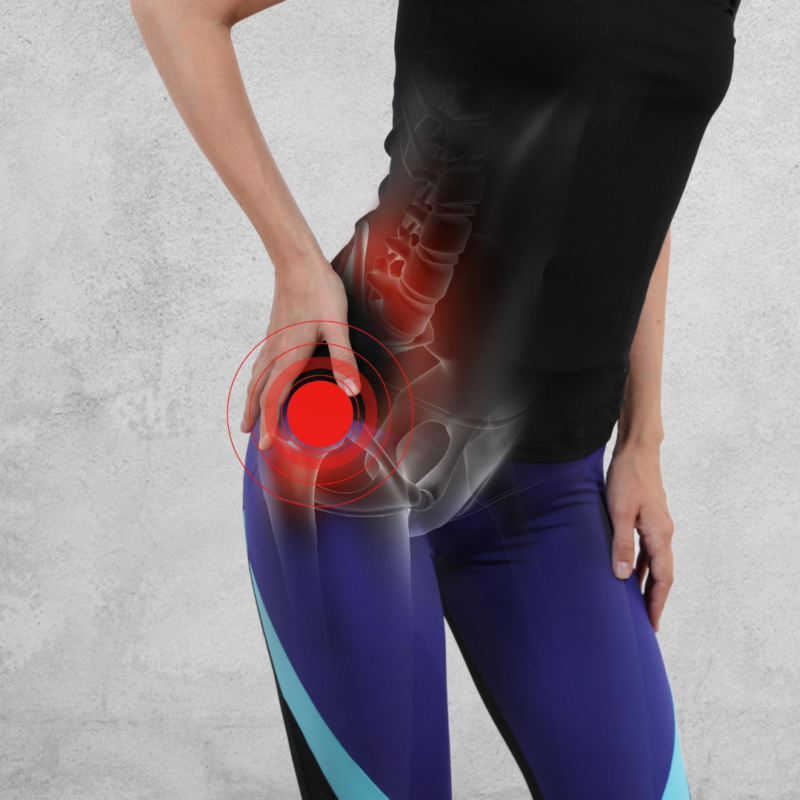
If you’ve ever experienced a sharp, aching pain on the outside of your hip, especially when lying on your side or after a long walk, you may be dealing with a condition called hip bursitis. Also known as greater trochanteric pain syndrome (GTPS), this condition can be frustrating and disruptive, but with the right management, recovery is very achievable. Physio can offer safe, effective strategies to reduce pain, restore strength, and get you back to moving comfortably. What is Hip Bursitis? Your hip has small fluid-filled sacs called bursae that sit between tendons, muscles, and bones to reduce friction. The main one affected in hip bursitis is the trochanteric bursa, located on the outer side of your hip. When this bursa or the surrounding tendons (like the gluteal tendons) become irritated, inflamed, or overloaded, pain develops. This is why many practitioners now use the broader term greater trochanteric pain syndrome, since the problem often involves both the bursa and the nearby tendons. Common Symptoms • Pain over the outer hip, sometimes radiating down the thigh • Tenderness when pressing on the bony point of the hip (greater trochanter) • Pain lying on the affected side, especially at night • Discomfort with walking, climbing stairs, or prolonged standing • Stiffness after sitting for long periods What Causes Hip Bursitis? Hip bursitis often occurs due to overload or irritation rather than a single traumatic event. Contributing factors can include: • Weakness or imbalance in the hip and gluteal muscles • Tightness/tension in the iliotibial band (ITB) or surrounding muscles • Repetitive movements like running, walking long distances, or stair climbing • Postural habits (e.g., crossing legs, standing with weight on one side) • Biomechanical factors like leg length differences or altered gait patterns It’s more common in women, particularly between ages 40–60, but can affect anyone. How Physiotherapy Can Help When you see one of our physios, the first step is a comprehensive assessment. We’ll look at your history, daily activities, posture, muscle strength, and movement patterns. This allows us to put together a tailored plan that addresses not just the pain, but also the underlying cause. Hands-On Treatments for Pain Relief In the early stages, our goal is to calm down irritation and reduce pain. We may use: • Soft tissue release or massage for tight muscles around the hip and thigh to help relive pressure on the affected structures • Myofascial release or cupping to ease tension and improve flexibility • Trigger point therapy or dry needling for overactive glute/TFL muscles & ITB. • Electrotherapy to help with pain relief and muscle activation These treatments help settle discomfort so you can move & feel better, but the real long-term fix comes from targeted exercise. Exercise Rehabilitation Research shows that progressive strengthening of the hip and gluteal muscles is the most effective treatment for hip bursitis. Your physio will guide you through a program that may include: • Isometric exercises for early pain management (e.g., static glute contractions) • Glute strengthening (bridges, resistance band walks, deadlifts, hip thrusts etc) • Hip stabilisation work to improve control during walking and running • Functional strengthening (squats, step-ups, single-leg work) to restore load tolerance Over time, we’ll progress your exercises to restore full strength and reduce the risk of recurrence. Education and Lifestyle Advice We’ll also talk through simple changes that make a big difference, such as: • Avoiding sleeping directly on the sore hip until it settles (a pillow between the knees can help) • Reducing prolonged standing or sitting with legs crossed • Adjusting training loads to prevent flare-ups • Choosing supportive footwear to improve biomechanics What the Evidence Says • Exercise is key: Research strongly supports targeted hip strengthening as the most effective long-term treatment for hip bursitis/GTPS. • Manual therapy helps short term: Soft tissue techniques, needling, and cupping can reduce pain, but work best when paired with strengthening. Basically, it can give us a window of opportunity – where symptoms are reduced so strengthening and rehab exercises can be done with less discomfort & pain. • Corticosteroid injections may help in acute or stubborn cases, but are less effective long-term compared to physiotherapy-led exercise programs. • Surgery is rarely required and only considered if conservative management fails. A systematic review in the British Journal of Sports Medicine highlights that exercise programs provide superior long-term outcomes compared with injections alone. A Partner in Your Recovery Hip bursitis can be stubborn, especially if it’s been hanging around for months. We will take the time to understand your unique situation, reduce your pain, and build a tailored strengthening and lifestyle plan to get you moving freely again. We’ll be with you every step of the way — from early pain relief to regaining strength, confidence, and independence in your daily activities. Key Takeaways • Hip bursitis (or greater trochanteric pain syndrome) causes outer hip pain, especially when lying on your side, walking, or climbing stairs. • Physiotherapy can help with pain relief, targeted strengthening, and practical advice for daily activities. • Research shows that exercise-based rehab is the most effective long-term solution. • With the right plan, most people can return to normal activities without ongoing pain. If you’ve been struggling with hip pain, book a time with our physios to get you back on track & feeling great!
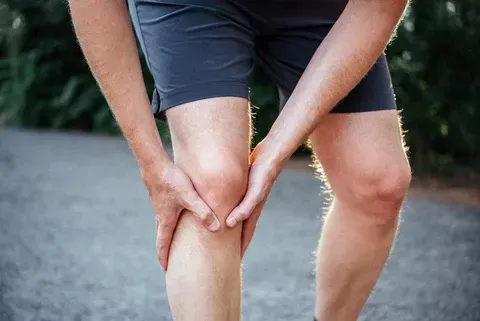
Physiotherapy for Patellar Tendinopathy: Reducing Pain and Restoring Jumping and Running Performance
If you’ve ever had pain just below your kneecap, especially during sport or exercise, you may have experienced something called patella tendinopathy. Often called “jumper’s knee”, this condition is common in people who play sports involving running, jumping, or sudden changes of direction, but it can affect anyone for a number of reasons. While it can be frustrating and sometimes stubborn, the good news is that physiotherapy is often highly effective for managing patella tendinopathy and helping you get back to the activities you love. What is Patella Tendinopathy? The patella tendon connects your kneecap (patella) to your shin bone (tibia). Its main job is to transfer the force of your quadriceps (thigh muscles) so you can straighten your knee when walking, running, or jumping. With patella tendinopathy, this tendon becomes painful and sometimes thickened due to overuse and overload. Unlike an acute “tear” or “strain,” tendinopathy develops gradually when the tendon is stressed more than it can adapt to. Common signs and symptoms: • Pain just below the kneecap, especially with jumping, running, or squatting • Stiffness or ache after exercise, sometimes the next morning • Pain that warms up with activity but can worsen if you keep pushing through • Reduced performance — difficulty with explosive movements or keeping up with training volume Why Does Patella Tendinopathy Happen? It usually develops due to a combination of: • Sudden increases in training load (e.g., more jumping, hill running, or gym work) • Poor movement mechanics (landing technique, hip/knee alignment) • Weakness or tightness in surrounding muscles like the quads, glutes, and calves • Not enough recovery between sessions It’s especially common in sports like basketball, volleyball, netball, football, and athletics — hence the nickname jumper’s knee. How Physiotherapy Can Help When you come to see one of our physios, we’ll start with a full assessment. This includes looking at your pain history, activity levels, biomechanics, strength, and training loads. From there, we’ll put together a tailored plan to not just help reduce pain, but also restore tendon health and prevent recurrences. Hands-On Treatment In the short term, we can use manual techniques to help reduce pain and help you move more freely. These may include: • Soft tissue release or massage for tight quads, hamstrings, or calves • Trigger point therapy or dry needling to release overloaded muscles around the knee • Myofascial release or cupping to improve flexibility and reduce tension • Electrotherapy to help with pain relief in acute cases While these treatments can provide quick relief, the long-term solution comes from exercise, rehab & training smart. Targeted Exercise Therapy This is the gold standard for patella tendinopathy. Research consistently shows that a structured strengthening program can help restore tendon capacity and function better than rest or passive treatments alone. Your physio will guide you through a progressive exercise plan that may include: • Isometric exercises (like static wall sits) for early pain relief • Slow, heavy strength training (such as squats, leg presses, split squats) to rebuild tendon tolerance • Eccentric loading (controlled lowering movements) to stimulate tendon repair • Plyometric drills to retrain jumping mechanics once pain is under control Education and Load Management One of the most important roles we play is helping you understand how to manage training loads. Tendons don’t like sudden spikes in activity, so we’ll help you find the right balance between exercise, sport, and recovery. We’ll also give you practical advice on warm-ups, footwear, and movement patterns to reduce strain on the tendon. What the research says • Exercise therapy is the cornerstone: The strongest evidence supports progressive loading exercises as the most effective treatment. (British Journal of Sports Medicine reviews highlight heavy slow resistance training as highly effective.) • Manual therapy & adjuncts (needling, cupping, massage) are helpful for pain relief and short-term function, but must be paired with exercise for long-term success. • Education & load management are essential — athletes who understand and adjust their training recover more successfully. • Surgery is rarely needed: Most cases respond well to conservative physiotherapy when managed properly. A Partner in Your Recovery Patella tendinopathy can be very frustrating, especially when it lingers or flares up every time you return to sport or try to increase your training. We don’t just treat the symptoms — we aim to help you understand why the problem developed, give you the right tools to rebuild tendon health, and support you step by step until you’re confident and pain-free. Whether you’re an elite athlete or someone who just wants to enjoy movement & exercise without knee pain, we’ll work with you to create a treatment plan that works for your lifestyle and goals. Key Takeaways • Patella tendinopathy (jumper’s knee) is an overuse injury affecting the tendon below your kneecap. • Physiotherapy helps by combining hands-on pain relief, progressive strengthening exercises, and education. • Evidence shows exercise-based rehab is the most effective long-term solution. • With the right plan, most people return to sport and activity without ongoing pain. If knee pain is holding you back, don’t wait until it becomes a bigger issue. Book an appointment with one of our physiotherapists, and we can help you find relief now, and get back to doing what you love.

Trying to conceive can be an emotional and physical journey. Many people explore ways to support their reproductive health beyond medical interventions, looking for gentle therapies that can improve overall wellbeing and optimise the chances of conception. One therapy gaining recognition for its supportive role is Brazilian Lymphatic Drainage (BLD). BLD is a specialised massage technique that uses gentle, rhythmic movements to stimulate lymphatic flow, improve circulation, and reduce congestion in the pelvic and abdominal areas. While it does not directly treat infertility, it can create a more optimal environment for reproductive health, ease discomfort, and reduce stress — all important factors in fertility. Understanding the lymphatic system and its role in fertility The lymphatic system is the body’s natural drainage network. It works closely with the circulatory system to: Remove excess fluid and toxins from tissues Maintain fluid balance Support immune function Reduce inflammation When lymphatic flow slows, fluid can accumulate in tissues, creating congestion. In the pelvic area, congestion can contribute to discomfort, bloating, and poor circulation around the uterus, ovaries, and fallopian tubes. This is where BLD can be particularly beneficial. By gently stimulating the lymphatic system, BLD encourages fluid movement, supports tissue health, and helps the body maintain a balanced internal environment — all of which may contribute to reproductive wellbeing. How Brazilian Lymphatic Drainage supports fertility Help improve circulation to reproductive organs BLD uses gentle, sweeping strokes to enhance lymphatic and blood flow in the pelvic and abdominal regions. Improved circulation ensures that the ovaries, uterus, and surrounding tissues receive oxygen and nutrients while metabolic waste products are removed more efficiently. This supports tissue health, making the reproductive system more receptive and functional. Helps reduce pelvic congestion Stagnant fluid in the pelvic area can lead to feelings of heaviness, bloating, and discomfort. BLD gently encourages the movement of lymph and fluid from congested tissues back into circulation, helping to ease these sensations. Many people report feeling lighter, more comfortable, and less bloated after a session. Helps support hormonal balance indirectly While BLD does not directly regulate hormones, improved lymphatic and circulatory function can support the organs responsible for hormone production and balance. Reduced inflammation, better nutrient delivery, and efficient waste removal create an environment that allows hormonal systems to function more effectively. Reduces inflammation Inflammation in the pelvic region can impact fertility. BLD helps the lymphatic system clear inflammatory by-products from tissues, which may reduce swelling and discomfort. For individuals with conditions such as endometriosis, polycystic ovary syndrome (PCOS), or pelvic congestion, BLD can be particularly supportive. Helps to promote relaxation and reduces stress Trying to conceive can be stressful, and elevated stress hormones like cortisol can interfere with ovulation and reproductive function. The gentle, rhythmic nature of BLD activates the parasympathetic nervous system, promoting relaxation, reducing stress, and supporting the body’s natural restorative processes. Many people feel deeply relaxed and lighter both physically and emotionally after a session. What a Brazilian Lymphatic Drainage session for fertility involves A BLD session focused on fertility typically lasts 60-90 minutes. During the session: • The therapist uses gentle, sweeping strokes to encourage lymphatic flow in the abdomen, pelvis, legs, and arms. • The focus is on promoting pelvic circulation and reducing congestion without causing discomfort. • The massage is light and soothing — not deep or forceful — as lymph vessels lie just beneath the skin. • Many people notice a sense of lightness and relaxation during the session, and some may feel an urge to urinate afterwards as excess fluid moves through the system. When and how often to have BLD While one session may provide immediate relief and a sense of lightness, regular sessions are often recommended for ongoing support. For fertility purposes, some individuals choose weekly or biweekly sessions, depending on their circumstances and under the guidance of a qualified therapist. Consistency helps: • Maintain optimal lymphatic flow • Reduce pelvic congestion over time • Support hormonal and reproductive function indirectly • Promote overall relaxation and stress reduction Complementary lifestyle strategies Brazilian Lymphatic Drainage is most effective when combined with healthy lifestyle choices that support fertility: • Hydration: Drinking adequate water helps lymphatic flow and enhances the body’s natural detox processes. • Movement: Gentle exercise like walking, yoga, or swimming supports circulation and lymphatic function. • Balanced nutrition: Nutrient-dense foods, healthy fats, and adequate protein support reproductive health. • Stress management: Techniques such as meditation, breathing exercises, or mindfulness complement the relaxation benefits of BLD. Who may benefit from BLD for fertility Brazilian Lymphatic Drainage may be beneficial for: • Individuals experiencing pelvic congestion or bloating • Those with reproductive conditions such as endometriosis, adenomyosis, or PCOS • People seeking a gentle, supportive therapy alongside medical fertility treatment • Anyone wanting to reduce stress, improve circulation, and support overall reproductive health It’s important to note that BLD is complementary, not a replacement for medical fertility care. Always consult your healthcare provider when exploring therapies to support conception. Final thoughts... While fertility involves many complex factors, supporting the body’s natural processes can make a meaningful difference. Brazilian Lymphatic Drainage offers a gentle, non-invasive way to improve pelvic circulation, reduce congestion, ease discomfort, and promote relaxation. For those trying to conceive, BLD can be a valuable part of a holistic approach that combines medical care, lifestyle strategies, and gentle therapies. Regular sessions may not only support physical wellbeing but also provide emotional relief and a sense of control during the fertility journey. By helping the lymphatic system function efficiently, BLD encourages the body to maintain balance, optimise reproductive organ health, and feel lighter and more comfortable overall.
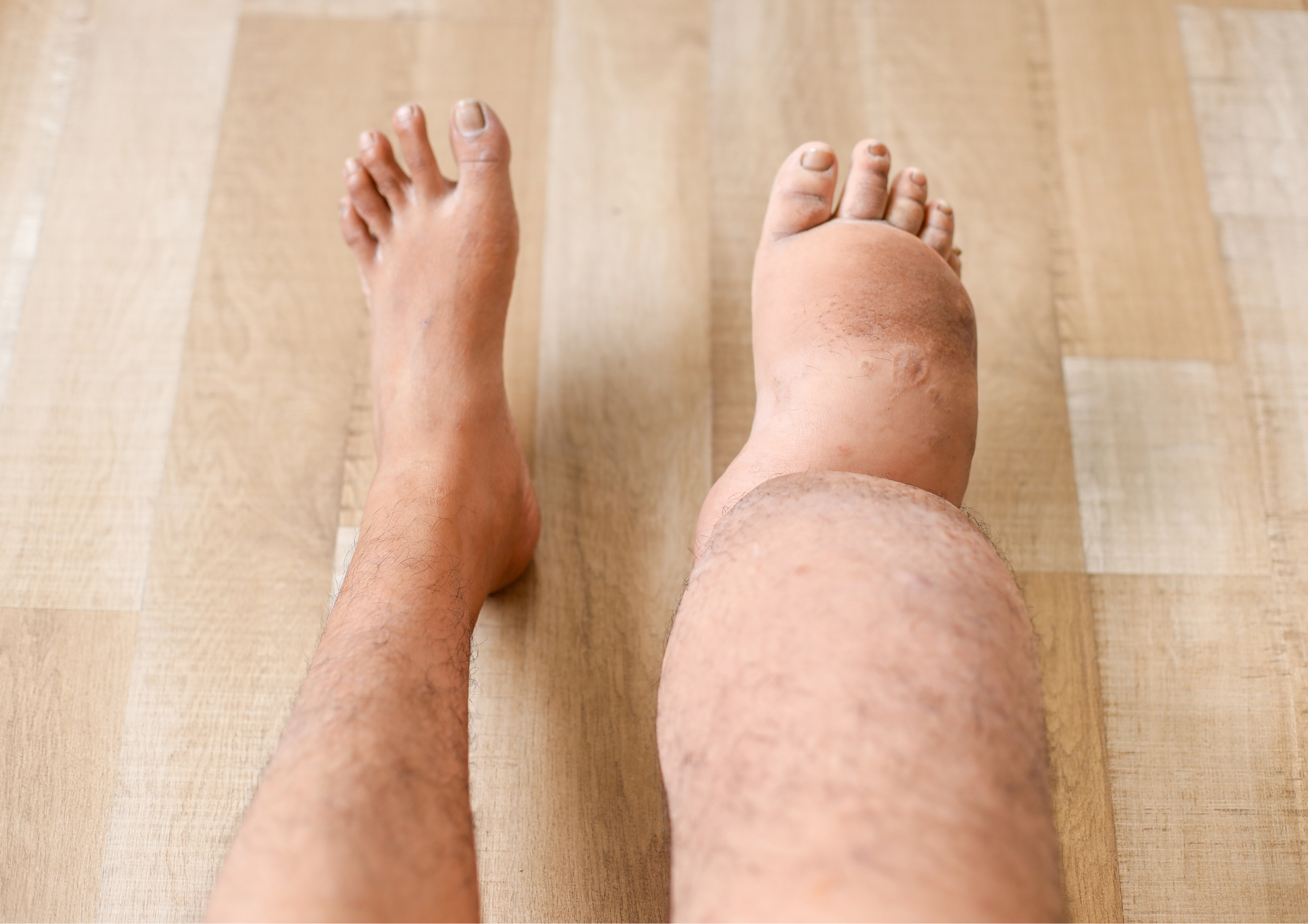
Brazilian Lymphatic Drainage for Lipoedema and Lymphoedema: Managing Swelling and Supporting Comfort
Lipoedema and lymphoedema are conditions that can significantly affect daily comfort, mobility, and self-confidence. Both involve abnormal fluid accumulation, but for different reasons: Lipoedema is a chronic condition characterised by abnormal fat and fluid deposition, usually in the legs and sometimes arms, causing heaviness, tenderness, and disproportionate limb size. Lymphoedema is caused by impaired lymphatic flow, leading to fluid retention, swelling, and tissue changes, often after surgery, trauma, or as a primary condition. While medical management is essential, complementary therapies can help reduce discomfort, improve mobility, and support lymphatic function. One such effective therapy is Brazilian Lymphatic Drainage (BLD). Unlike traditional lymphatic drainage, BLD is firm, continuous, and dynamic, specifically designed to move stagnant fluid, reduce tissue congestion, and improve circulation. It also provides sculpting and contouring effects, helping limbs feel lighter and more comfortable. How Brazilian Lymphatic Drainage works The lymphatic system is the body’s natural drainage network, responsible for removing fluid, toxins, and metabolic waste from tissues. In lipoedema and lymphoedema, fluid can accumulate due to tissue changes or impaired lymphatic flow, causing heaviness, swelling, and discomfort. BLD works by: • Using firm, wave-like, continuous movements to mobilise fluid from congested tissues • Directing fluid toward lymph nodes where it can be efficiently cleared • Reducing tissue congestion while improving circulation to affected areas • Supporting detoxification and tissue health • Promoting sculpting and contouring effects, especially in the legs, arms, and abdomen Unlike light lymphatic massages, BLD applies dynamic pressure that encourages deep fluid movement and tissue mobilisation, making it especially effective for chronic conditions like lipoedema and lymphoedema. Benefits of BLD for lipoedema and lymphoedema Helps reduce swelling and heaviness BLD’s firm, continuous strokes help move fluid from congested areas toward the lymph nodes, reducing swelling in the legs, arms, and glutes. Many clients notice a measurable reduction in heaviness and limb circumference after a few sessions, making mobility easier and daily tasks more comfortable. Helps to improve circulation and tissue function Enhanced lymphatic and blood flow ensures that tissues receive oxygen and nutrients while waste products are cleared. For individuals with lipoedema or lymphoedema, this can reduce discomfort, tenderness, and inflammation while supporting tissue health. Helps support lymphatic and fluid clearance BLD helps reactivate lymphatic flow in areas affected by impaired drainage. This is especially important for lymphoedema patients, whose lymphatic systems may struggle to clear excess fluid effectively. Regular sessions help maintain consistent fluid movement and reduce the risk of fluid build-up. Provides sculpting and contouring effects BLD’s firm, flowing strokes target affected areas, helping limbs feel lighter and more contoured. For lipoedema, where fat deposition can be uneven, BLD assists in mobilising fluid and easing tissue tension, which can improve overall limb shape and comfort. Helps reduce discomfort and tenderness Both lipoedema and lymphoedema can cause pain, tenderness, and a heavy sensation. BLD helps relieve pressure in congested tissues, reduces tightness, and promotes a sense of lightness in the limbs, making daily movement easier. Helps enhance overall wellbeing Beyond physical relief, BLD promotes a sense of comfort and relaxation. While it is firm and dynamic, clients often feel energised, lighter, and more in control of their bodies after a session. This can improve confidence and quality of life, particularly for individuals managing chronic swelling. What a Brazilian Lymphatic Drainage session involves A typical BLD session for lipoedema or lymphoedema lasts 45–60 minutes and includes: Firm, continuous, wave-like movements on the affected limbs, glutes, abdomen, and sometimes the arms Focus on mobilising fluid toward key lymph nodes, including inguinal, axillary, and cervical nodes Dynamic pressure designed to move stagnant fluid effectively, not just superficially Particular attention to areas prone to congestion, such as thighs, calves, or forearms Clients may notice lightness, reduced swelling, and improved mobility After a session, many people experience increased urination as the body clears excess fluid, a lighter sensation in the limbs, and reduced tension or tenderness. Frequency and consistency For best results, regular BLD sessions are recommended: Weekly or biweekly sessions can help maintain lymphatic flow and reduce recurrent swelling Consistent treatment supports tissue health, fluid balance, and mobility Over time, regular BLD can improve the long-term appearance, feel, and function of affected limbs Consistency is especially important for lipoedema and lymphoedema, as these are chronic conditions where fluid retention can return without ongoing support. Complementary strategies BLD works best alongside supportive lifestyle measures: Hydration: Adequate water intake supports lymphatic clearance Movement: Gentle exercises like walking, swimming, or cycling improve circulation and reduce congestion Compression garments: For lymphoedema, these may be recommended to support fluid control after sessions Balanced nutrition: Anti-inflammatory and nutrient-rich foods support tissue health and minimise fluid retention Stress management: Techniques such as meditation, deep breathing, or yoga complement BLD’s benefits Who may benefit BLD can help: Individuals with lipoedema or lymphoedema seeking relief from swelling and heaviness People who experience tenderness or discomfort in congested areas Those wanting dynamic, effective therapy to support lymphatic function and body contouring Anyone looking for improved mobility, comfort, and confidence while managing chronic swelling BLD is complementary and should be used alongside medical management for lipoedema or lymphoedema. Always consult a healthcare provider for personalised care. Final thoughts... Living with lipoedema or lymphoedema can affect comfort, mobility, and confidence. Brazilian Lymphatic Drainage offers a firm, dynamic, and highly effective way to mobilise fluid, reduce swelling, ease tenderness, and support lymphatic function. Regular BLD sessions, combined with hydration, movement, and appropriate medical support, provide a holistic approach to managing these chronic conditions. Beyond physical relief, clients often experience increased energy, improved mobility, and a renewed sense of control over their bodies. By targeting the abdomen, pelvis, glutes, and limbs, Brazilian Lymphatic Drainage addresses fluid congestion at its source, promoting long-term comfort, balance, and wellbeing.

Recovering from surgery can be challenging, both physically and emotionally. Swelling, bruising, fluid retention, stiffness, and discomfort are common after many procedures, whether they are cosmetic, abdominal, pelvic, or orthopaedic. While medical care and physiotherapy are often essential, complementary therapies such as Brazilian Lymphatic Drainage (BLD) can play a valuable role in supporting recovery and enhancing comfort. Brazilian Lymphatic Drainage is a firm, dynamic, and continuous massage technique designed to mobilise fluid, reduce tissue congestion, improve circulation, and support the body’s natural healing processes. Unlike traditional lymphatic massage, BLD uses wave-like movements with specific pressure, often targeting the surgical area, surrounding tissues, and key lymphatic pathways, helping to reduce swelling, bruising, and tension. Understanding post-surgical fluid accumulation After surgery, the body responds with inflammation and fluid accumulation as part of the healing process. Lymphatic flow can be temporarily impaired due to tissue trauma, incisions, or reduced mobility, leading to: Swelling in the operated area and surrounding tissues Bruising and discolouration Tightness or stiffness in muscles and connective tissue Discomfort or a heavy sensation in affected limbs or torso Excess fluid can slow recovery, prolong discomfort, and contribute to a feeling of heaviness. Brazilian Lymphatic Drainage helps target these issues by mobilising stagnant fluid, promoting lymphatic flow, and supporting tissue healing. How Brazilian Lymphatic Drainage supports post-surgical recovery Reduces swelling and oedema BLD uses firm, continuous, wave-like movements to move excess fluid from the surgical site and surrounding tissues toward lymph nodes for clearance. This helps reduce post-operative swelling, making the affected area feel lighter and more comfortable. Helps reduce bruising faster Bruising occurs when blood leaks into surrounding tissues after surgery. By stimulating lymphatic and circulatory flow, BLD encourages efficient removal of these by-products, potentially reducing the duration and intensity of bruising. Enhances circulation and tissue oxygenation Improved lymphatic and blood circulation ensures that tissues around the surgical site receive oxygen and nutrients essential for healing. This can support collagen production, tissue repair, and overall recovery. Promotes scar and tissue flexibility Post-surgical adhesions, stiffness, or tightness can develop around the incision site. BLD’s dynamic, firm strokes gently mobilise tissues, helping to maintain flexibility, improve mobility, and reduce discomfort in the early stages of healing. Supports detoxification Surgery generates metabolic by-products as part of tissue repair. BLD helps move stagnant fluid away from the area, allowing the lymphatic system to efficiently eliminate toxins, which supports overall recovery and reduces systemic fatigue. Encourages relaxation and reduces stress While BLD is firm and dynamic, many patients report a sense of deep relaxation and relief during and after treatment. This reduction in stress hormones can complement healing by supporting immune function and encouraging overall wellbeing. What to expect during a post-surgical BLD session A typical session lasts 45–60 minutes, tailored to the individual’s surgical site and stage of recovery. During the session: The therapist applies firm, continuous wave-like movements to the surgical area and surrounding tissues Fluid is mobilised toward key lymph nodes (inguinal, axillary, and cervical) Pressure is adjusted to the patient’s comfort level, always firm enough to move fluid effectively without causing harm Sessions may also target limbs or torso if swelling extends beyond the surgical site Clients often notice immediate lightness, reduced swelling, and improved mobility after a session. Some may experience increased urination, which is a natural response as fluid is cleared from tissues. Timing and frequency The timing and frequency of BLD after surgery depend on the type of procedure and the person's healing progress. This can be discussed with your massage therapist as you progress. Generally: Early intervention: Once cleared by your surgeon, BLD can be started to manage early swelling and bruising. Regular sessions: Weekly or biweekly sessions may be recommended to maintain lymphatic flow, reduce oedema, and support ongoing tissue healing. Tailored approach: Each session is customised to the patient’s surgical area, comfort level, and stage of recovery. Consistency is key, as regular BLD can accelerate recovery, reduce complications from fluid accumulation, and help restore comfort and mobility. Complementary post-surgical care strategies BLD is most effective when combined with other supportive measures: Hydration: Adequate water intake helps maintain lymphatic flow and reduce swelling. Gentle movement: Light walking or physiotherapy-approved exercises enhance circulation and prevent stiffness. Balanced nutrition: Protein-rich, nutrient-dense foods support tissue repair and collagen formation. Compression garments: If prescribed, these support lymphatic drainage and prevent fluid accumulation between sessions. Stress management: Relaxation techniques complement BLD’s effects and support overall healing. Who may benefit BLD can benefit individuals recovering from a variety of surgical procedures, including: Cosmetic surgeries (abdominoplasty, liposuction, breast surgery) Orthopaedic procedures (joint replacements, ligament repairs) Abdominal or pelvic surgeries (hysterectomy, C-section, hernia repair) Any surgery where swelling, bruising, or tissue tightness is present It is important to note that BLD is complementary and should always be performed with clearance from the treating surgeon &/or medical practitioner. Final thoughts... Post-surgical recovery can be uncomfortable and slow, particularly when fluid retention, bruising, or tissue tightness is present. Brazilian Lymphatic Drainage offers a firm, dynamic, and highly effective approach to support healing, reduce swelling, and improve overall comfort. Regular BLD sessions, combined with hydration, gentle movement, balanced nutrition, and appropriate medical care, provide a holistic approach to recovery. By targeting the surgical area, surrounding tissues, and key lymphatic pathways, BLD helps mobilise fluid, improve circulation, and enhance tissue repair, leaving patients feeling lighter, more mobile, and more comfortable as they heal.
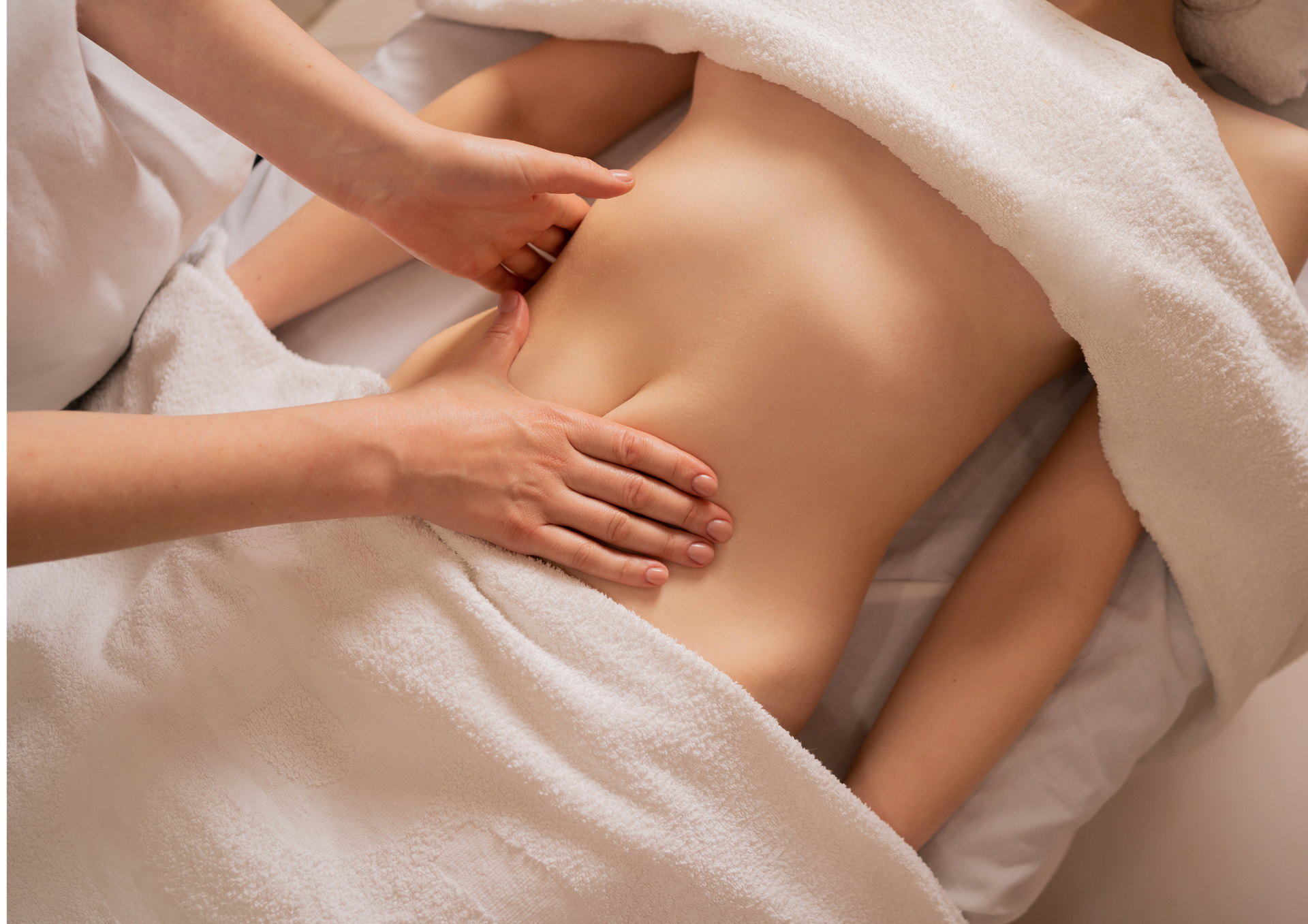
Bloating and digestive discomfort are common issues for many people, often linked to food intolerances, sensitivities, or slow digestion. Abdominal fullness, discomfort, or a “heavy” feeling can affect daily comfort, energy levels, and overall wellbeing. While dietary management is essential for addressing food intolerances, Brazilian Lymphatic Drainage (BLD) can be a valuable complementary therapy for improving digestion, reducing bloating, and supporting overall abdominal comfort. What is Brazilian Lymphatic Drainage? Unlike traditional lymphatic drainage, BLD is firm, dynamic, and continuous, using wave-like movements along the abdomen, pelvis, and surrounding areas. This technique helps mobilise fluid, support digestive organs, and improve lymphatic flow, reducing bloating and promoting a lighter, more comfortable feeling in the body. Understanding bloating and food intolerances Bloating occurs when the digestive system becomes congested with fluid, gas, or inflammation, causing a full, tight, or heavy feeling in the abdomen. It can be triggered by: Food intolerances or sensitivities (e.g., dairy, gluten, FODMAPs) Slow digestion or impaired gut motility Fluid retention in the abdominal tissues Stress, which can affect gut function Food intolerances can exacerbate bloating by creating inflammation and fluid retention in the digestive tract and surrounding tissues. Brazilian Lymphatic Drainage works to support the body’s natural drainage system, encouraging the removal of excess fluid, inflammatory by-products, and metabolic waste. This helps relieve abdominal pressure and support overall digestive comfort. How Brazilian Lymphatic Drainage helps to: Reduce abdominal bloating BLD applies firm, continuous, wave-like movements to the abdomen, pelvis, and surrounding areas, actively mobilising stagnant fluid and relieving pressure. This helps ease bloating, distension, and the “heavy” feeling that often accompanies food intolerances Support digestive flow and organ function Firm, dynamic abdominal movements stimulate lymphatic flow and circulation around the digestive organs, including the stomach, intestines, and liver. Improved fluid and blood flow supports nutrient delivery, waste removal, and digestive efficiency, reducing discomfort and promoting regularity. Mobilise fluid and reduces tissue congestion Bloating is often accompanied by localized fluid retention in the abdominal and pelvic tissues. BLD’s firm, continuous strokes encourage the movement of this fluid toward the lymph nodes, helping to reduce pressure, swelling, and overall abdominal heaviness. Enhance detoxification and tissue health BLD helps support the body’s natural detoxification processes by moving lymph and waste products away from the digestive organs. This can reduce inflammation, relieve tissue tension, and promote healthier cellular function, complementing dietary strategies for managing food intolerances. Promote relaxation and reduces stress-related digestive issues While BLD is firm and dynamic, many clients report a deep sense of relief and relaxation during and after treatment. Stress can exacerbate bloating and digestive discomfort, so supporting the parasympathetic nervous system can indirectly improve digestive function and fluid balance. Provide contouring and abdominal toning benefits A unique aspect of BLD is its sculpting effect. Firm, flowing abdominal and pelvic movements not only reduce fluid and bloating but also support a toned, lighter feeling in the torso. Clients often notice an immediate difference in abdominal softness and comfort. What to expect during a BLD session for bloating A typical session lasts 45–60 minutes and focuses on the abdomen, pelvis, and surrounding tissues: Firm, continuous, wave-like strokes mobilise fluid and support lymphatic drainage Movements target the abdominal organs and surrounding tissues to improve circulation and digestive comfort Fluid is directed toward key lymph nodes, including the inguinal and cervical nodes Sessions may also include the glutes and lower limbs if fluid retention extends beyond the abdomen After a session, clients often notice: Immediate relief from abdominal bloating A lighter, more comfortable feeling in the torso Increased urination as excess fluid is cleared Improved energy and digestive comfort Frequency and consistency For occasional bloating, a single session can provide noticeable relief. For chronic bloating related to food intolerances, regular sessions are recommended: Weekly or biweekly sessions help maintain abdominal drainage and digestive comfort Consistency supports fluid balance, tissue health, and organ function Over time, regular BLD can reduce the frequency and severity of bloating and improve overall abdominal comfort Complementary strategies Brazilian Lymphatic Drainage works best alongside supportive lifestyle and dietary strategies: Hydration: Adequate water intake supports lymphatic and digestive flow Dietary management: Identifying and reducing trigger foods can reduce inflammation and bloating Gentle movement: Walking, yoga, or stretching improves circulation and digestive motility Stress management: Relaxation techniques complement BLD by reducing stress-related digestive tension Gut-supporting nutrition: Prebiotics, probiotics, and nutrient-dense foods help optimise digestive health Who may benefit : People experiencing chronic or occasional abdominal bloating People with food intolerances or sensitivities causing fluid retention and digestive discomfort Anyone seeking a dynamic, effective therapy to support lymphatic and digestive function Those looking for abdominal comfort, reduced pressure, and a sculpted feeling It is important to note that BLD is a complementary therapy. Persistent digestive issues should always be discussed with a healthcare provider to identify and manage underlying causes. Final thoughts... Bloating and discomfort from food intolerances can impact daily life and overall wellbeing. Brazilian Lymphatic Drainage offers a firm, dynamic, and effective approach to supporting fluid movement, reducing abdominal pressure, and improving digestive comfort. When combined with hydration, dietary management, gentle movement, and stress reduction, BLD can provide a holistic strategy for managing bloating and supporting digestive health. By targeting the abdomen, pelvis, and surrounding tissues, Brazilian Lymphatic Drainage not only helps alleviate bloating but also promotes a lighter, more comfortable, and energised feeling throughout the body.
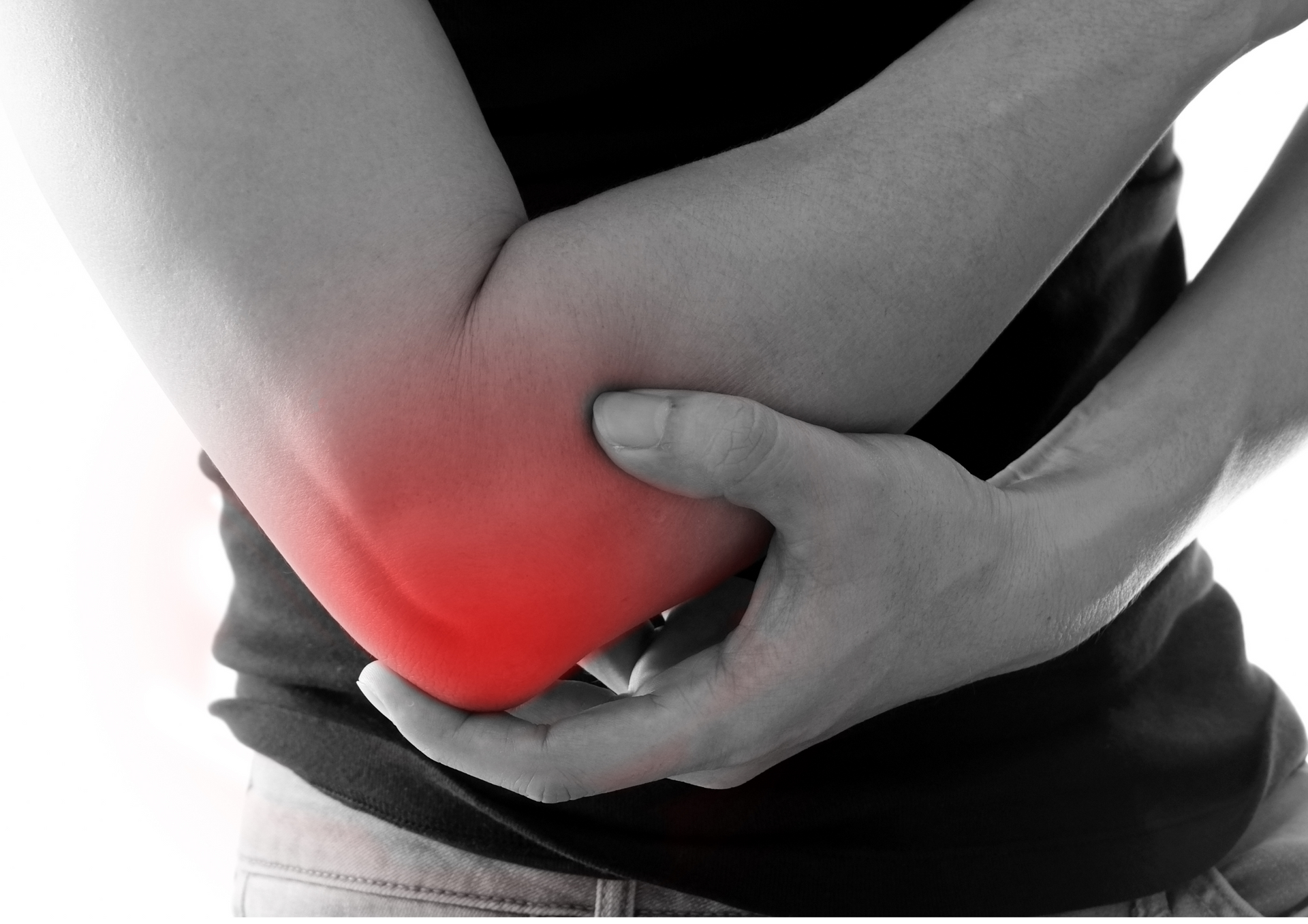
Golfer’s elbow (or medial epicondylitis) is actually more common than the name suggests. You don’t have to play golf to get it! This condition causes pain on the inside of the elbow and can make gripping, lifting, or even simple daily tasks uncomfortable. What is Golfer’s Elbow? Golfer’s elbow occurs when the tendons on the inside of the elbow become irritated or overloaded. This usually happens from repetitive gripping, lifting, or twisting motions. Common symptoms include: Pain and tenderness on the inside of the elbow Weakness in the forearm or grip Pain when twisting the wrist or lifting objects Difficulty doing everyday tasks, like opening jars or shaking hands How Physiotherapy Can Help Physiotherapy aims to address the cause of the problem, not just the pain. Our approach includes hands-on treatment, targeted exercises, and practical advice to support recovery. Hands-On Treatment We use techniques aiming to ease pain and improve muscle function, which may include: Manual therapy and joint mobilisation to restore elbow and wrist movement Myofascial release to reduce tension in forearm muscles Trigger point release and dry needling to release tight or sore spots Electro dry needling to relieve pain and support healing Exercise-Based Rehab We will guide you through gradual strengthening and stretching exercises for the forearm and elbow, and if needed, the shoulder, back and core (as these help support the smaller joints). These exercises help the tendon recover safely while rebuilding strength to prevent recurrence. Activity Modification & Advice We’ll review your daily activities or sports technique and suggest small adjustments to reduce strain on your elbow while still staying active. Posture & Ergonomics Poor posture or workstation setup can contribute to elbow strain. We can provide tips to optimise posture and reduce unnecessary stress on the arm. How Long Does Recovery Take? Recovery varies depending on the severity of the injury and how consistently you do your rehab. Most people notice improvements within 3–6 weeks with physiotherapy and home exercises. Why Choose Active Balance Physio & Wellness? At Active Balance, our experienced physios can create a personalised treatment plan that targets the root cause of golfer’s elbow. Our goal is to relieve pain, restore function, and help you return to your activities with confidence.
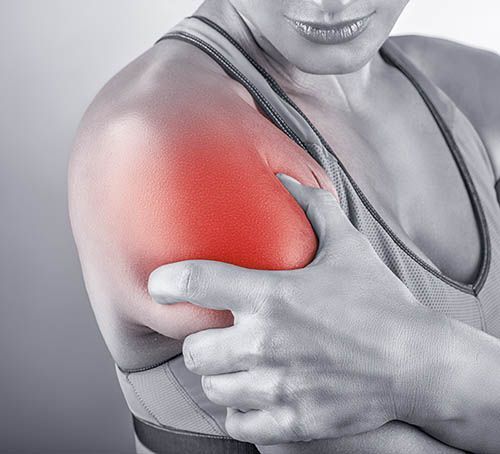
Shoulder pain can be frustrating, especially when it stops you from doing things like lifting your arm, playing sport, or even doing everyday tasks. One common cause is shoulder impingement, where the tendons and soft tissues in your shoulder get “pinched” during movement. At Active Balance, we help people with shoulder impingement get relief, restore strength, and get back to doing what they love, often without surgery or long-term pain. What is Shoulder Impingement? Shoulder impingement happens when the tendons of your rotator cuff or the cushioning bursa in your shoulder become irritated and inflamed. This often happens because of: Repetitive overhead movements (like throwing, swimming, or lifting) Poor posture like rounded shoulders Weak or imbalanced shoulder muscles Symptoms can include: Pain when lifting your arm, especially overhead Weakness in the shoulder Difficulty performing daily tasks or sports activities Pain sleeping on the affected side How Physiotherapy Can Help Our physios use a combination of hands-on treatment, exercises, and practical advice to reduce pain, restore movement, and prevent the problem from coming back. Hands-On Treatment We use hands on techniques to help relieve pain and improve shoulder movement, such as: Manual therapy and joint mobilisation to improve shoulder and neck movement Myofascial release to ease tight muscles Trigger point release and dry needling to target sore spots in the muscles Strengthening and Rehab Exercises We’ll guide you through exercises to strengthen your rotator cuff and shoulder stabilisers, plus any other muscle imbalances we pick up on assessment, helping to improve function and reduce the risk of future pain. Posture and Activity Advice Small changes in posture or how you do certain activities can make a big difference. We’ll show you practical ways to reduce strain on your shoulder at work, home, or during sports & workouts. Activity Modification We’ll help you safely modify activities that aggravate your shoulder while still keeping you active, aiming to avoid “complete rest” wherever possible. How Long Does Recovery Take? Recovery depends on the individual and the severity of the impingement. With manual therapy, relief can be quite fast, however to achieve long lasting relief without the need for hands on treatment, 6-8 weeks may be required for rehab & exercises to take effect. Take the First Step Toward a Pain-Free Shoulder If shoulder pain is limiting your daily life or sport, don’t wait. Book an appointment with our team today and let our physiotherapists help you get your shoulder moving comfortably again.

Tennis elbow is one of those injuries that sounds like it only happens on the court, but in truth, you don’t need to play tennis to get it. At Active Balance we see people with tennis elbow caused by everything from computer work to gardening, DIY, or repetitive lifting at work. So, what exactly is it, and how can physio help? What is tennis elbow? Tennis elbow (the medical term is lateral epicondylitis) is a condition where the tendons around the outside of the elbow become irritated or overloaded. This usually happens from repetitive movements, gripping, or heavy lifting. Common symptoms include: Pain on the outside of the elbow Discomfort when gripping, lifting, or twisting (like turning a door handle or opening a jar) Stiffness or weakness in the forearm How physio at Active Balance can help: Our physios use a combination of hands-on treatment, education, and exercise therapy to get you back to doing what you love without pain holding you back. Here’s how we approach tennis elbow: Accurate assessment: We take the time to properly assess your elbow, arm, and even your shoulder and neck, since these areas can all contribute to your symptoms. Hands-on treatment: To help ease pain and improve movement, we use a variety of techniques depending on what suits your body best. This may include: Manual therapy and gentle joint mobilisation Myofascial release to reduce tightness in surrounding muscles Dry needling to target muscle tension and trigger points Electro dry needling for pain relief and tissue healing support These treatments can provide short-term relief while we work on the long-term solution through exercise and strength building. Rehab plan: The most important part of recovery is a graded strengthening program for the forearm and surrounding muscles. We’ll guide you through specific exercises to gradually load the tendon in a safe way so it heals stronger. Load management advice: We’ll look at the daily activities that may be aggravating your elbow and show you ways to modify them. Simple changes to the way you lift, grip, or position your arm can make a big difference. Extra support when needed: In some cases, we may use strapping and/or bracing to help speed up recovery, ease symptoms and manage stubborn pain. How long does recovery take? Every case is different, but with the right treatment and consistent rehab, many people notice significant improvement in 2-6 weeks. The key is not just reducing pain, but also rebuilding strength so the problem doesn’t keep coming back. Takeaway Tennis elbow can be frustrating and painful, but the good news is, with the right approach, it’s very treatable. Our physios are here to help you recover, rebuild strength, and get back to the activities you enjoy. If elbow pain is slowing you down, book an appointment with our team today and let’s get you moving comfortably again.
